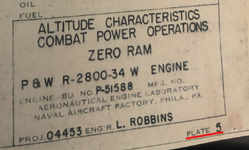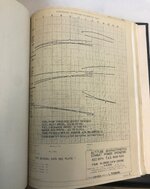Metrallaroja
Airman
- 97
- Nov 21, 2020
As I said:Please, mate, need little bit more explanation
On these two graphs I only see:
- zero RAM: two runs (different engines), with 70 and 70.5 inch (high gear: 2300 HP at critical altitude 6000 ft)
- so-called "420 mph" RAM runs: with 70.1 and 70.3 inch (high gear: 2350 HP at - thanks to RAM - critical altitude approx. 11000 ft)
Where's something written about the figure 59.5 or 60 inch?
Are the low gear full throttle runs (2350 HP without, and 2800 HP with RAM) not also at approx. 70 inch - if not, why so?
Ram effect increases MAP above the zero ram critical alt.
In this case, the R-2800-34 low gear has the zero ram critical alt for 70'' 2800HP below SL, so it needs ram to get to 70''.
At zero ram it only gets to 59.5'' that is why it produces 2350HP with zero ram.
Ram increases the MAP to 70'' and so the engine power increases to about 2800hp.
I joined power and MAP of both zero ram and 420mph ram for you:
As you can see in low gear zero ram, supercharger can only get to 59.5'' so it only produces 2350BHP. With a 420mph speed, ram effect increases the MAP to 70'' so power increases to 2800BHP
The high gear supercharger can produce 70'' with zero ram but the critical alt is 6000 feet, with a 420mph speed ram effect increases the crit alt to 12000 feet.





